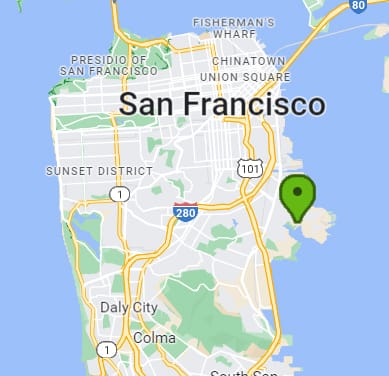 Introduction
Introduction
Moving in the Bay Area can be a daunting task, given the region’s unique challenges such as traffic congestion, varied terrain, and diverse weather conditions. However, with the right planning and professional help, your move can be smooth and stress-free. In this guide, we will provide valuable tips from experienced Bay Area movers to help you navigate these challenges efficiently.
Understanding the Bay Area’s Unique Moving Challenges
Traffic Congestion
The Bay Area is notorious for its heavy traffic, which can significantly impact your moving schedule.
- Peak Traffic Times:
- According to a report by INRIX, the Bay Area is among the top ten most congested urban areas in the U.S. Peak traffic times are typically weekday mornings from 7:00 AM to 9:00 AM and evenings from 4:00 PM to 7:00 PM.
- To avoid delays, plan your move outside of these peak hours. Early mornings, late evenings, or weekends are often the best times to schedule your move.
- Traffic Apps:
- Utilize traffic apps like Waze or Google Maps to monitor real-time traffic conditions and find the quickest routes. These apps can help you avoid congestion and road closures, ensuring a smoother journey.
Varied Terrain
The Bay Area’s diverse landscape includes steep hills, winding roads, and narrow streets, which can be challenging for moving trucks.
- Hilly Areas:
- Neighborhoods like San Francisco’s Twin Peaks and Berkeley Hills require special consideration due to their steep inclines. Professional movers have the expertise and equipment to navigate these areas safely.
- For DIY moves, consider renting a truck with good traction and braking capabilities to handle the slopes.
- Narrow Streets:
- Many historic neighborhoods in the Bay Area feature narrow streets that can be difficult for large moving trucks to maneuver. Professional movers are skilled at navigating tight spaces and can help avoid potential damage to your belongings and the surrounding property.
Weather Considerations
The Bay Area’s microclimates mean that weather conditions can vary significantly across different areas.
- Rainy Season:
- The rainy season typically runs from November to March. Plan your move outside of these months if possible to avoid the complications of wet and slippery conditions.
- If you must move during the rainy season, use waterproof packing materials and cover furniture with plastic sheeting to protect it from moisture.
- Fog:
- Coastal areas like San Francisco and Daly City often experience heavy fog, which can reduce visibility and make driving more hazardous. Schedule your move during mid-morning or early afternoon when fog is less likely to be a problem.
Pre-Move Planning
Declutter and Organize
One of the most effective ways to ensure a smooth move is to declutter and organize your belongings before the big day.
- Sort and Purge:
- Go through each room and sort items into categories: keep, donate, sell, or discard. This reduces the volume of items to move and makes packing more efficient.
- According to a survey by the National Association of Professional Organizers, decluttering can reduce moving costs by up to 40%.
- Donate and Recycle:
- Donate gently used items to local charities or thrift stores. Many organizations offer free pickup services for large donations.
- Recycle old electronics, paper, and other recyclable materials. Check with your local waste management services for recycling guidelines and drop-off locations.
Efficient Packing
Proper packing is crucial for a smooth move. Here are some tips to ensure your belongings are packed safely and efficiently.
- Use Quality Packing Materials:
- Invest in high-quality packing materials such as sturdy boxes, bubble wrap, packing paper, and heavy-duty tape. These materials provide better protection for your items during transit.
- Label Boxes Clearly:
- Label each box with its contents and the room it belongs to. This makes unpacking easier and helps movers place boxes in the correct rooms.
- Pack an Essentials Box:
- Pack a box with essentials you’ll need immediately upon arrival at your new home. This should include toiletries, clothes, important documents, and basic kitchen supplies.
Choosing the Right Bay Area Movers
Hiring professional movers can greatly simplify your move. Here are some tips for choosing the right moving company in the Bay Area.
- Research and Reviews:
- Read online reviews and ratings on platforms like Yelp, Google Reviews, and the Better Business Bureau. Look for companies with consistently positive feedback and a good track record of reliability.
- Get Multiple Quotes:
- Request quotes from at least three different moving companies. Compare the quotes to understand the services included and the overall cost. Be wary of quotes that are significantly lower than others, as they may indicate subpar service or hidden fees.
- Verify Credentials:
- Ensure that the moving company is licensed and insured. For interstate moves, check for a valid USDOT number issued by the Federal Motor Carrier Safety Administration (FMCSA). For local moves, verify the company’s license with the California Public Utilities Commission (CPUC).
- Ask About Experience:
- Inquire about the company’s experience with moves similar to yours. Experienced movers are more likely to handle your belongings with care and navigate any challenges that may arise.
Moving Day Tips
Preparing for the Movers
Proper preparation on moving day can make a big difference. Here are some tips to ensure everything goes smoothly.
- Reserve Parking:
- Reserve a parking spot for the moving truck as close to your home as possible. This minimizes the distance movers have to carry items and speeds up the process.
- In some areas, you may need to obtain a parking permit. Check with your local city offices for permit requirements and application procedures.
- Protect Your Home:
- Use floor runners, door frame protectors, and furniture blankets to protect your home from damage during the move. Professional movers usually provide these items, but it’s good to confirm in advance.
- Communicate with Movers:
- Maintain clear communication with the moving team. Provide them with a layout of your new home and instructions for where to place items.
- If you have any special requirements or fragile items, let the movers know in advance.
Post-Move Tips
Settling into Your New Home
Once you’ve arrived at your new home, take steps to settle in and make it feel like home.
- Unpack Essentials First:
- Start by unpacking the essentials box to ensure you have everything you need for the first few days. This includes toiletries, clothes, and basic kitchen supplies.
- Set Up Utilities:
- Ensure that utilities such as electricity, water, gas, and internet are set up and functioning. Contact your service providers to confirm installation dates and times.
- Explore Your Neighborhood:
- Take some time to explore your new neighborhood. Locate nearby grocery stores, pharmacies, parks, and other amenities. This helps you get acquainted with your new surroundings and makes the transition easier.
Conclusion
Moving in the Bay Area comes with its unique set of challenges, but with careful planning and the right professional help, you can ensure a smooth and efficient move. By understanding the traffic patterns, terrain, and weather considerations, and by choosing a reliable moving company, you can navigate these challenges effectively. Whether you’re moving across the city or across the country, these tips from experienced Bay Area movers will help make your relocation a success. Contact Pedro’s Moving Services for professional, eco-friendly moving solutions tailored to your needs.



